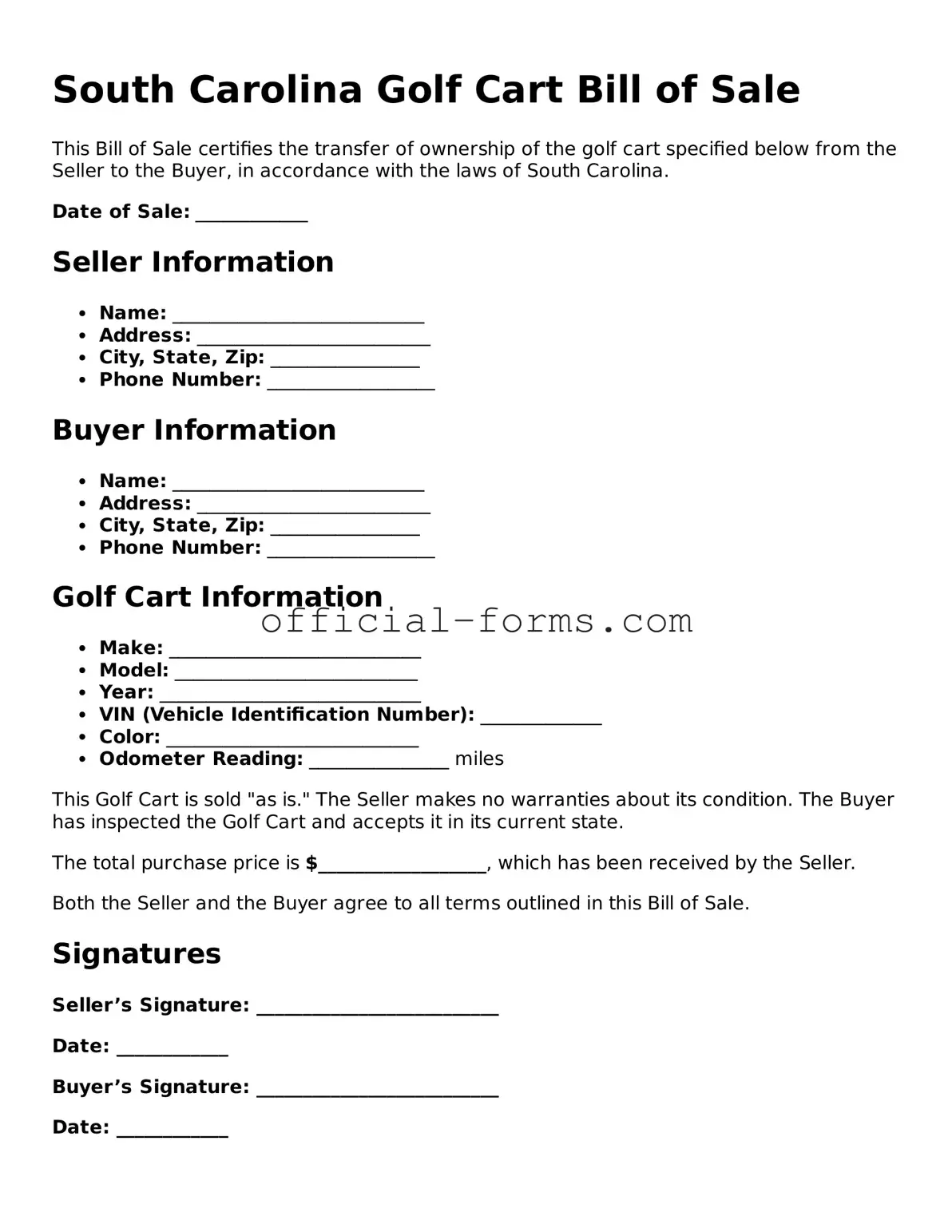Filling out the South Carolina Golf Cart Bill of Sale form can be straightforward, but many people make common mistakes that can lead to confusion or legal issues down the line. One frequent error is failing to include all required information. Buyers and sellers must provide specific details such as the names, addresses, and contact information of both parties. Omitting even one piece of information can create problems when trying to transfer ownership.
Another common mistake is not accurately describing the golf cart. The form should include details like the make, model, year, and Vehicle Identification Number (VIN). Without this information, it becomes difficult to establish clear ownership, which can lead to disputes later.
People often overlook the importance of signatures. Both the buyer and the seller must sign the document for it to be valid. A missing signature can invalidate the sale, leaving both parties in a precarious position. It's essential to ensure that all necessary signatures are present before considering the transaction complete.
Some individuals make the mistake of not dating the form. A date is crucial as it marks when the transaction took place. This information can be vital for record-keeping and for any future legal matters that may arise regarding the sale.
Another issue arises when buyers and sellers do not keep a copy of the completed form. After signing, it’s wise for both parties to retain a copy for their records. This can be helpful in case of any disputes or questions about the sale in the future.
People sometimes misunderstand the payment terms. The Bill of Sale should clearly outline how much was paid for the golf cart and the method of payment. This clarity can prevent misunderstandings and ensure that both parties are on the same page regarding the transaction.
Additionally, many individuals forget to check for any liens on the golf cart before completing the sale. If the cart has outstanding debts, the buyer could face unexpected complications. It’s wise to verify that the cart is free of liens to avoid future issues.
Lastly, not consulting local regulations can lead to trouble. Different areas may have specific rules regarding the sale and operation of golf carts. Familiarizing oneself with these regulations can save time and prevent potential fines or legal issues after the sale is completed.
